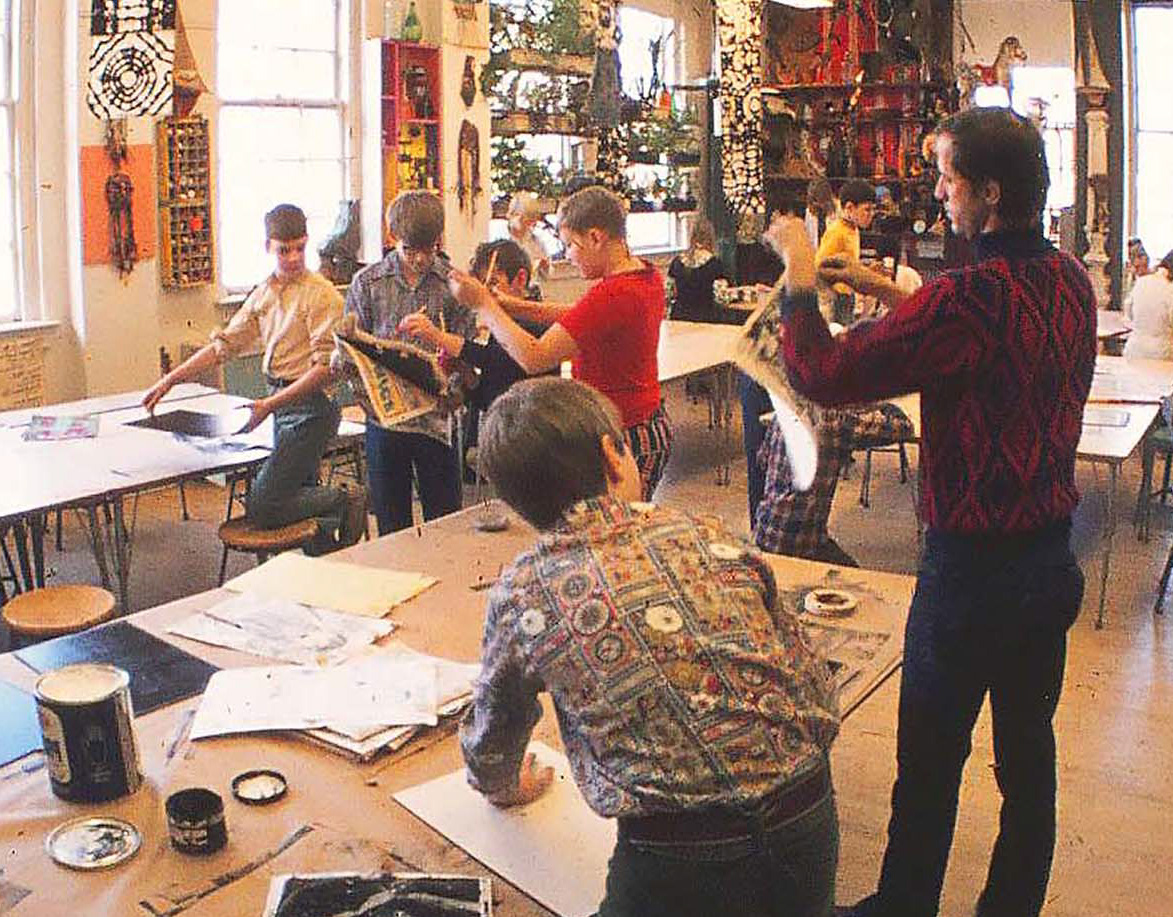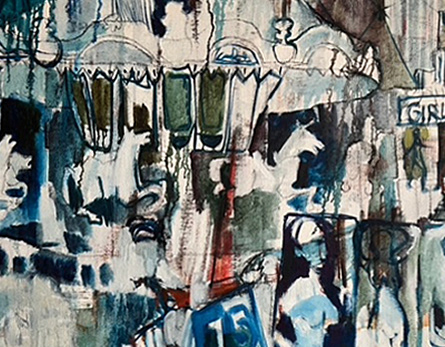(above) Cathy Hodge works with clay in her father's Campus School classroom.
Let's talk about the things that surrounded the students in the Hodge art room. That wily conglomeration of objects gleaned from school janitors, curbsides and family attics, arranged in a slightly crazy, non-linear way, made what could have been a bland, institutional room into a sandbox for the imagination.
This was a place where young minds were allowed to open up, make new connections, be curious. Where students found out that it didn't really matter what a thing was, but if they really looked at it, they might notice how the light hit it – or, perhaps, they might make some altogether new thing out of it.
(below, left) Part of the art room Hodgepodge.
(below, right) Students themselves often became artists' models.
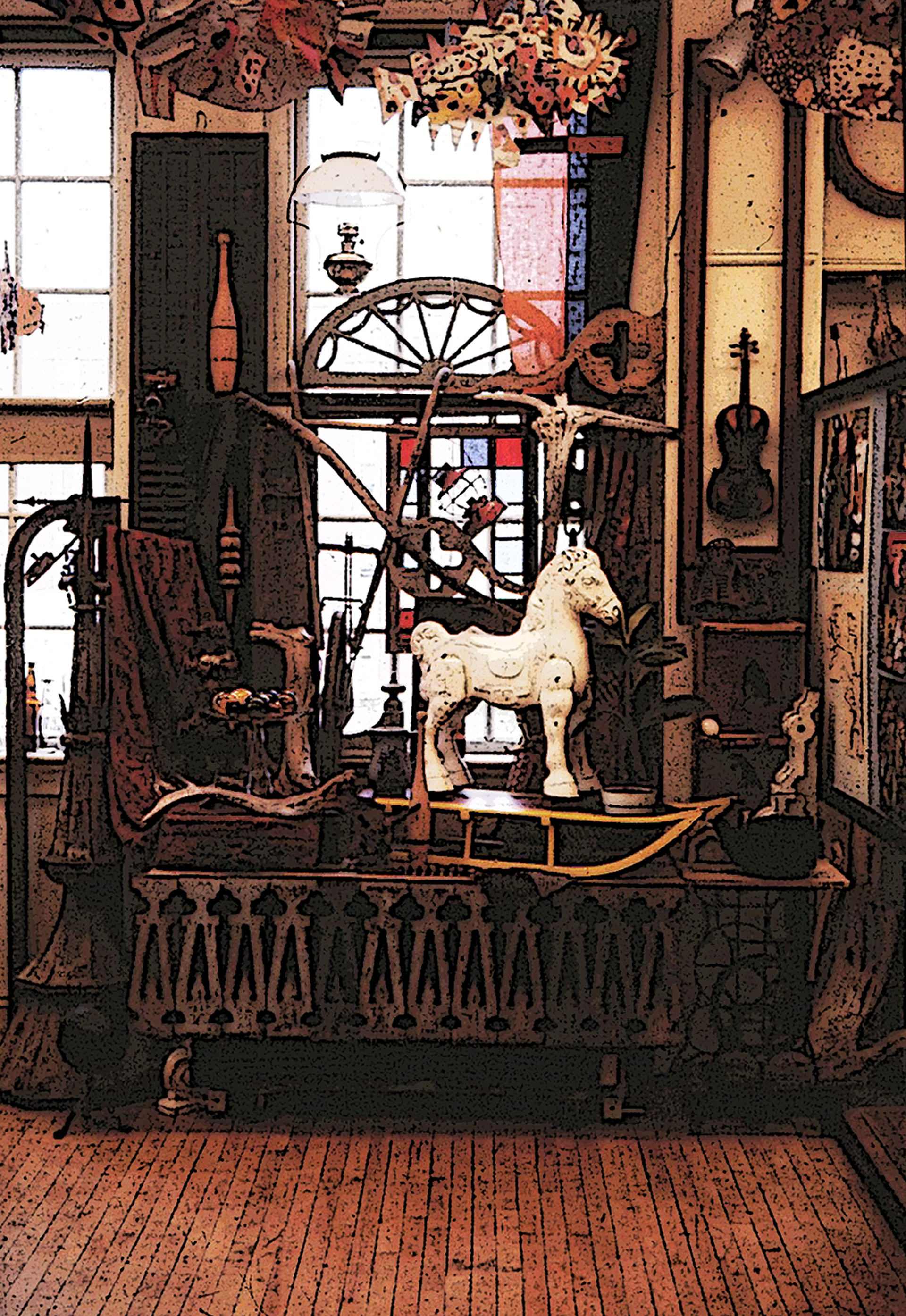


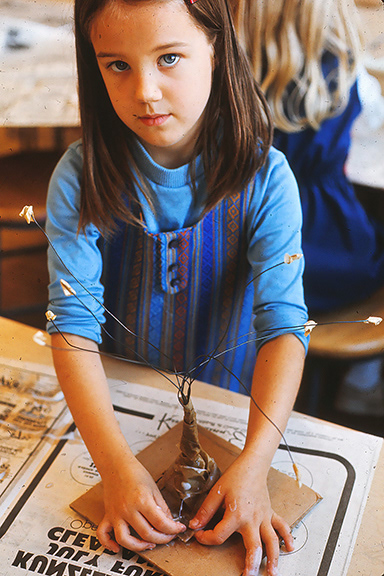

So much activity. So much exploration. So much fun. And always, a place to explore, make mistakes and learn new things.
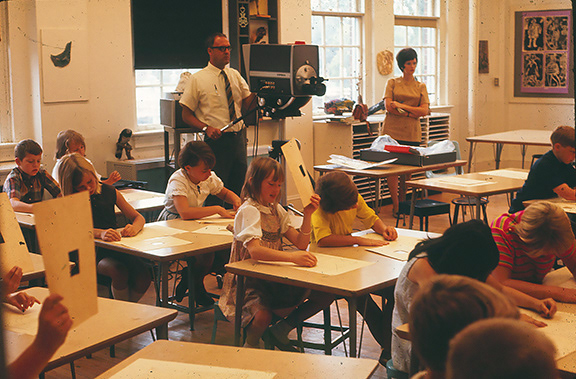
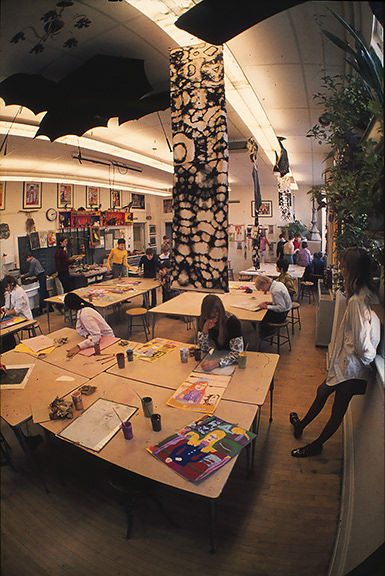
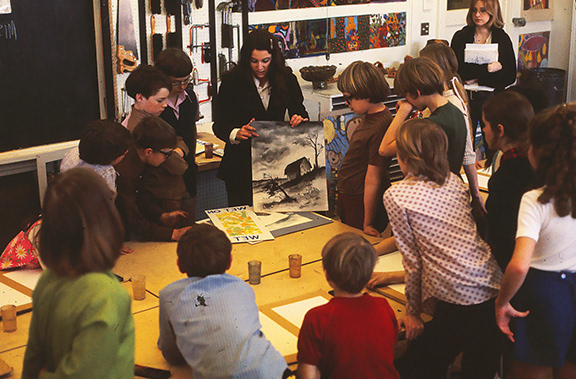
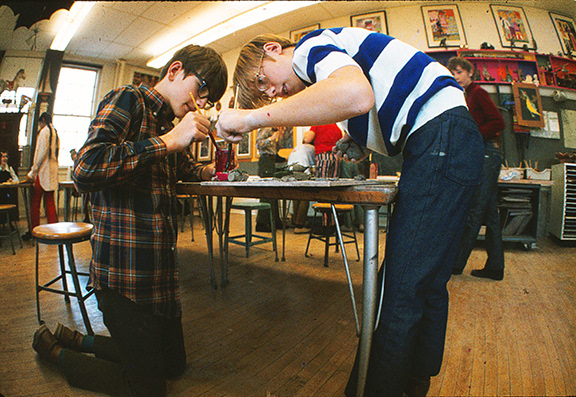


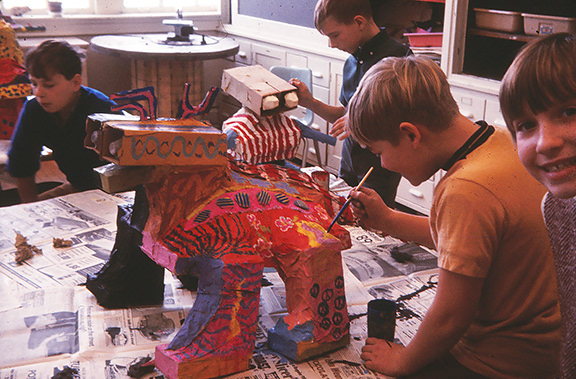
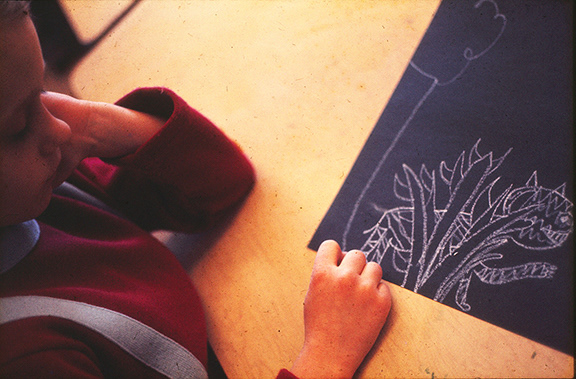
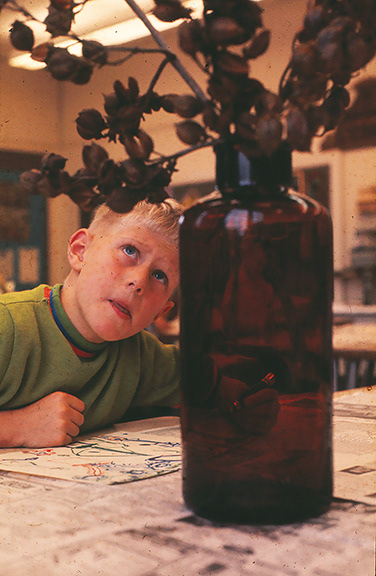
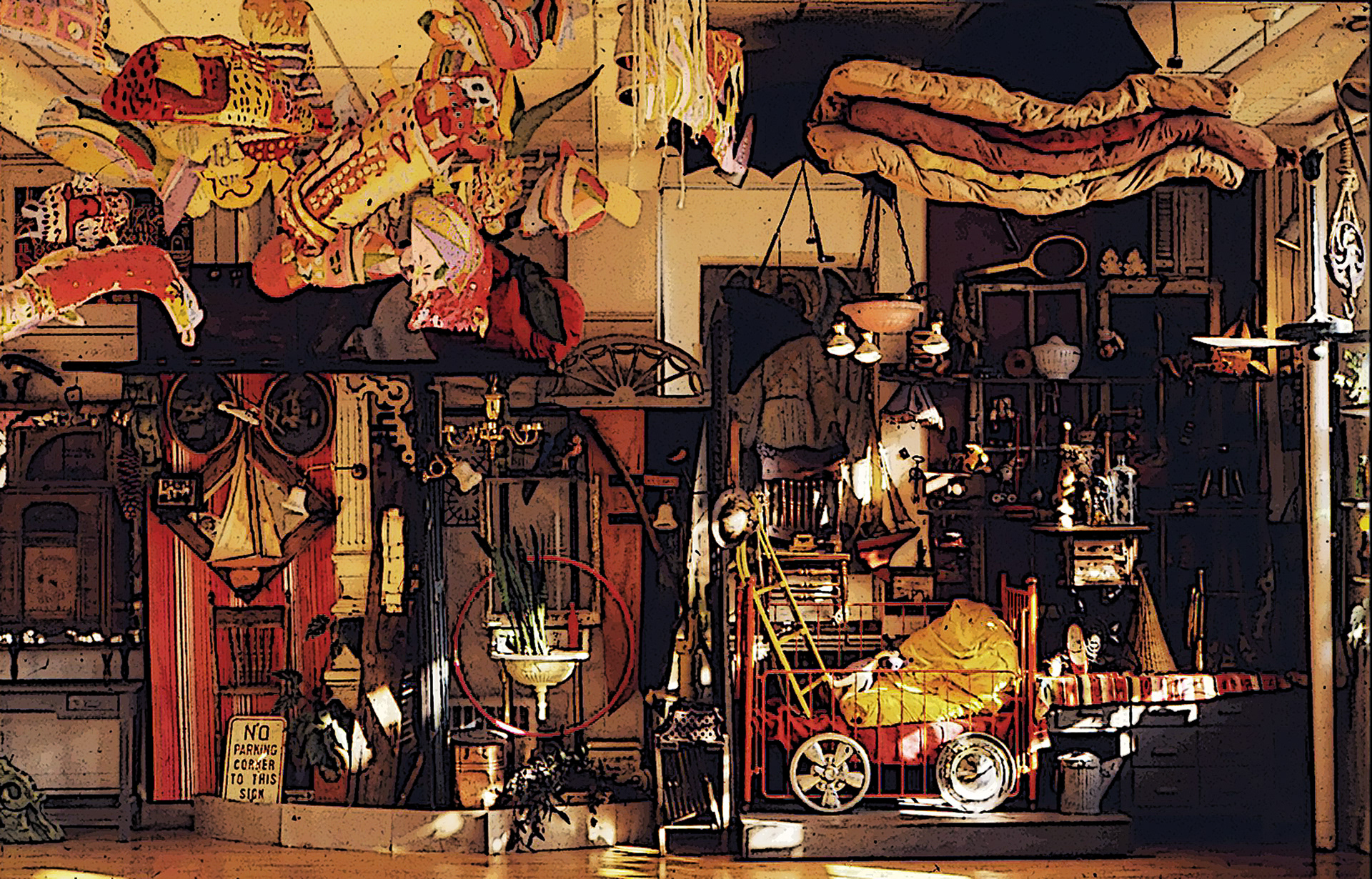


(below) Hodge students not only learned to believe in their own ability to be creative, they also learned how to be part of a working team of co-creators. Learning how to making decisions collaboratively and respecting each others' abilities was an integral part of group projects in the Hodge art room.
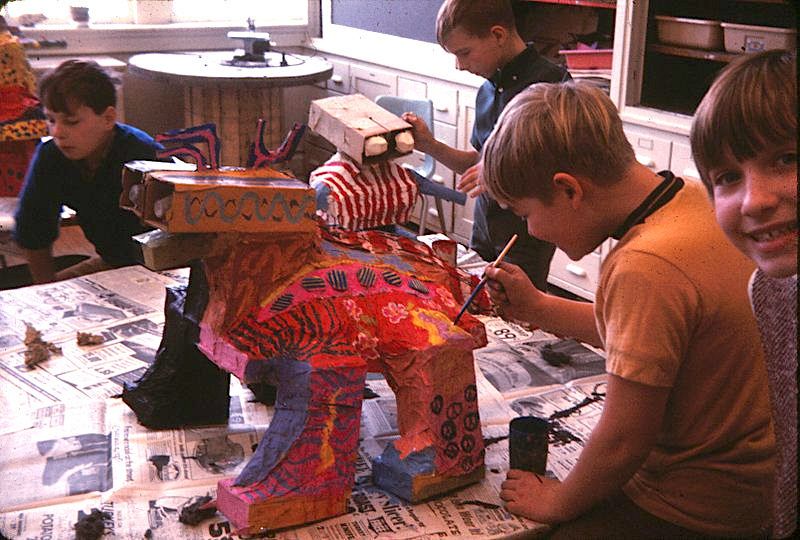
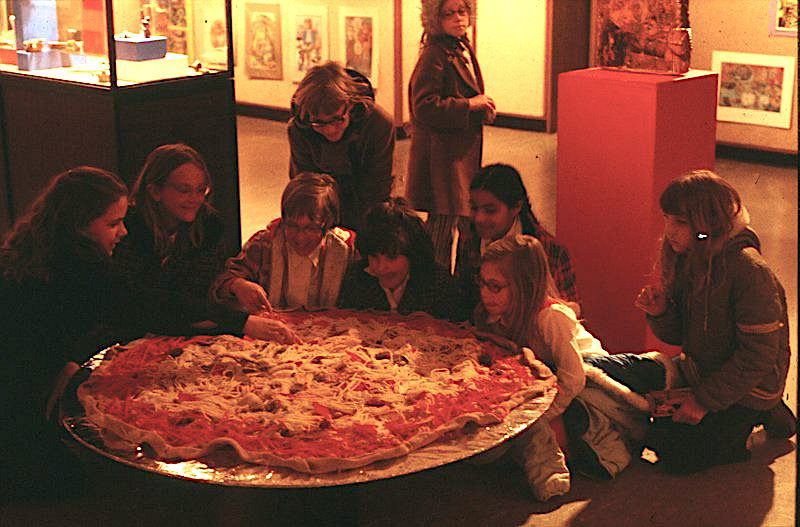


(below left) One of the more advanced Hodge assignments involved drawing not the model herself – but instead, focusing on (and then drawing) the image being projected onto her body. As a result, students observed the complexity of distorted forms, encouraging them to draw the forms as they actually saw them, in a somewhat abstracted state.
(below right) Once a year, the Hodge art room transformed into a gallery where student works of all levels were treated as respectfully as any art gallery treats adult artists' works. This further instilled the idea that all students were creative and that their artistic voices were important.

